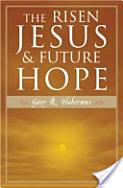Reliability of the Old Testament
In the interest of brevity, we will look at the arguments presented by Dan Story as a tool to summarize the reams of information available on this topic. Story offers the following three proofs for the reliability of the Old Testament: the transmission of the text, archeology, and fulfilled prophecy. Old Testament scribes from the Hebrew tribe of Levi knew they were copying God’s word and therefore went to great lengths to ensure accuracy by counting every line, word, syllable, and letter.(2) Prior to the discovery of the Dead Sea Scrolls in 1947, the oldest existing Hebrew copy of the Old Testament was the Masoretic Text dated around 900 A.D. The Dead Sea Scrolls have been dated almost a thousands years earlier than the Masoretic Text, around 150 B.C. The Dead Sea Scrolls, which contain two complete copies of Isaiah as well as fragments from virtually every other Old Testament book, were word for word identical to the Masoretic Text in over 95 percent of the readings.(3) The minimal variations that did exist were comprised of obvious slips of the pen and variations in spelling.(4) For believers in God’s providential preservation of the scriptures the preceding information is historical proof of preservation, our Old Testament is exactly the same as it was when originally inspired by God.
Nelson Glueck, author of Rivers in the Desert, informs his readers that “no archaeological discovery has ever controverted a Biblical reference.”(5) Time and again, the archaeologist’s spade has confirmed Biblical events, customs, cities, and nations mentioned in the Old Testament that skeptics had dismissed as mythological.(6) Dan Story offers the following summary of the archaeological reliability of the Old Testament:
- Archaeology has proven that Israel derives its ancestry from Mesopotamia, as the Bible teaches (Genesis 11:27-12:24).
- Archaeology suggests that the world’s languages likely arose from a common origin, as Genesis 11 teaches.
- Jericho, and several other cities mentioned in the Old Testament, previously thought to be legendary by skeptics, have been discovered by archaeologists.
- Bible critics used to claim that the Hittite civilization mentioned in Genesis did not exist at the time of Abraham because there was not record of it apart from the Old Testament. However, archaeology has discovered that it not only existed but lasted more than 1,200 years. Now you can get a doctorate in Hittite studies from the University of Chicago.
- Social customs and stories in the Old Testament credited to the time of the patriarchs (Abraham, Isaac, and Jacob) are in harmony with archeological discoveries, casting additional light on the historical accuracy of the Biblical record.(7)
“One of the strongest evidences that the Bible is inspired by God is its predictive prophecy.”(9) Unlike any other religious documents, the Bible offers over two thousand fulfilled prophecies that validate its historical claims. The specific nature of these predictions cannot be ignored. They deal with the birth, life, and death of Jesus Christ, the nation of Israel, gentile nations (Babylon, Media-Persia, Greece, and Rome), cities (Jerusalem, Sidon, and Babylon), and individual people (Nebuchadnezzar, Cyrus). In The New Evidence that Demands a Verdict, Josh McDowell chronicles 61 Old Testament prophecies that were fulfilled in Jesus Christ.(10) In his book reviewed by the American Scientific Affiliation, Science Speaks, Peter Stoner comments on the mathematical probability that any man up to the present time might have fulfilled just eight of the sixty-one prophecies covered by McDowell. Stoner writes, “We find the chance that any man might have lived down to the present time and fulfilled all eight prophecies is 1 in 1017. That would be 1 in 100,000,000,000,000,000.” In order to comprehend this staggering probability Stoner offers the following illustration:
If we take 1017 silver dollars and lay them on the face of Texas. They will
cover all the state two feet deep. Now mark one of these silver dollars
and stir the whole mass thoroughly, all over the state. Blindfold a man
and tell him that he can travel as far as he wished, but he must pick up one
silver dollar and say that this is the right one. What chance does he have
of getting the right one? Just the same chance that the prophets had of
writing eight prophecies and having them all come true in any one man, from
their day to the present time, providing they wrote them according to their own
wisdom.(11)
When one considers the probability of forty-eight Old Testament prophecies being fulfilled in one person, the odds increase to 1 in 10157, according to Stoner.(12) Compared to the Biblical prophets, the highly revered seer Nostradamus can only be viewed as a false prophet. Contrary to tabloid claims, Nostradamus never predicted the place or year of a single earthquake nor do his vague prophecies regarding the rise of Hitler compare to the astounding accuracy and specificity of the Biblical prophets.(13)
Based upon the available manuscript and archeological evidence, as well as the compelling testimony of fulfilled prophecy, there is no reason for any fair-minded person to doubt the historical reliability of the Old Testament.
Endnotes:
1) Dan Story. Defending Your Faith: How to Answer the Tough Questions. (Nashville, TN: Thomas Nelson, 1992), 34.
2) Ibid., 35.
3) Gleason L. Archer. A Survey of Old Testament Introduction. (Chicago, IL: Moody Press, 1974), 25.
4) Ibid., 25.
5) Nelson Glueck. Rivers in the Desert. (Philadelphia, PA: Jewish Publications Society of America, 1969), 31.
6) Story. Defending Your Faith: How to Answer the Tough Questions. 36.
7) Ibid., 36.
8) For additional reading on the archeological evidences for the historical reliability of the Bible, consult the following works, Josh McDowell, The New Evidence that Demands a Verdict, Clifford A. Wilson, Rocks, Relics, and Biblical Reliability, Edwin Yamauchi, The Stones and the Scriptures.
9) Norman Geisler. Baker Encyclopedia of Christian Apologetics. (Grand Rapids: MI, Baker Books, 1999), 609.
10) Josh McDowell. The New Evidence that Demands a Verdict. (Nashville, TN: Thomas Nelson, 1999), 168-192.
11) Peter Stoner. Science Speaks. (Chicago, IL: Moody Press, 1963), 100-107.
12) Ibid., 109-110.
13) Geisler. Baker Encyclopedia of Christian Apologetics, 615.

























